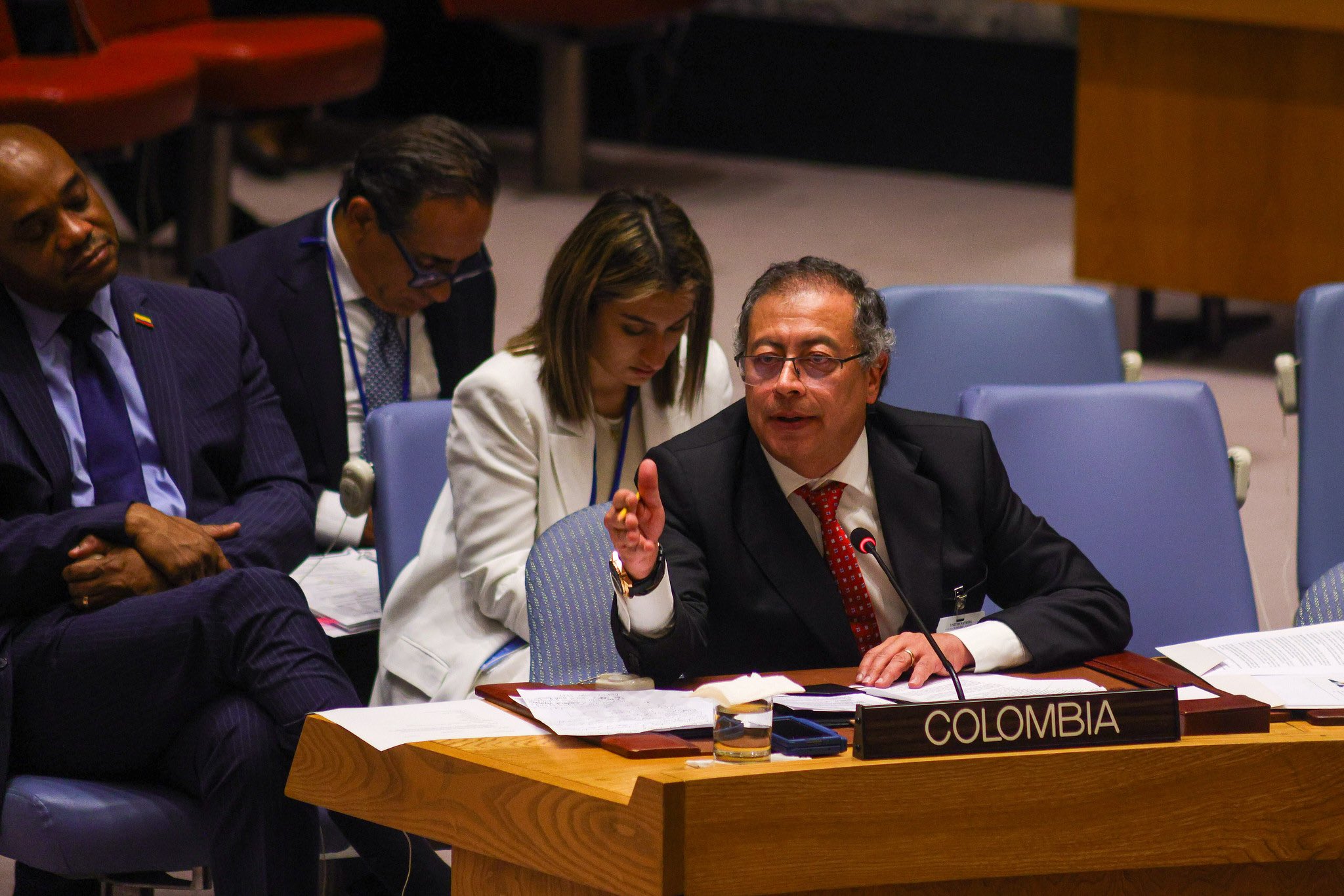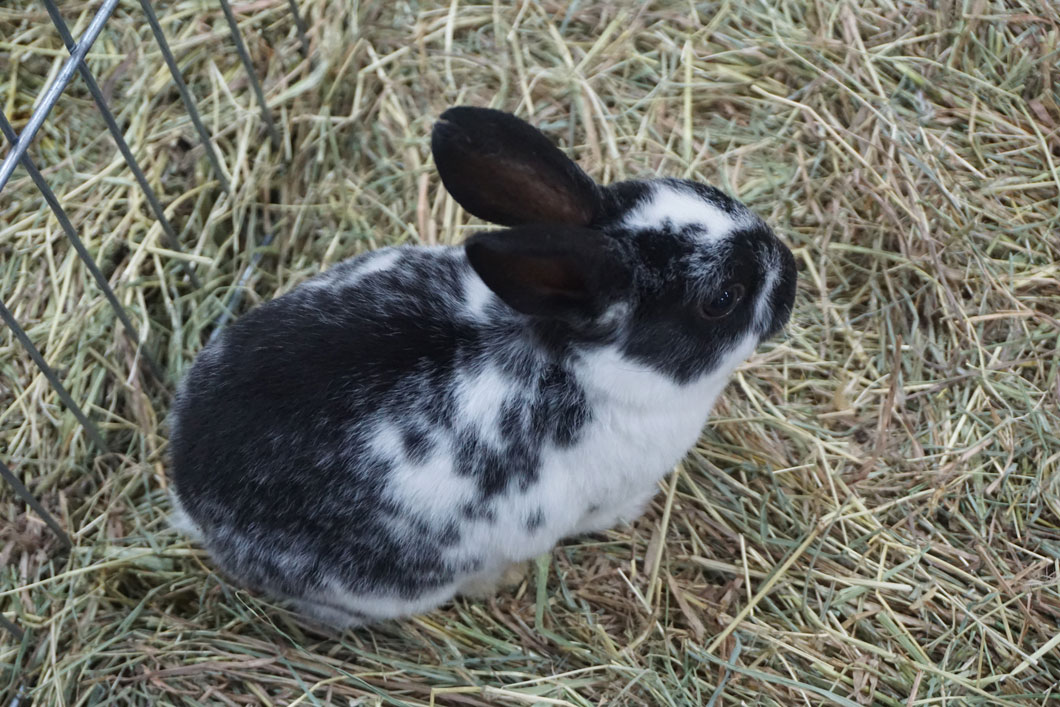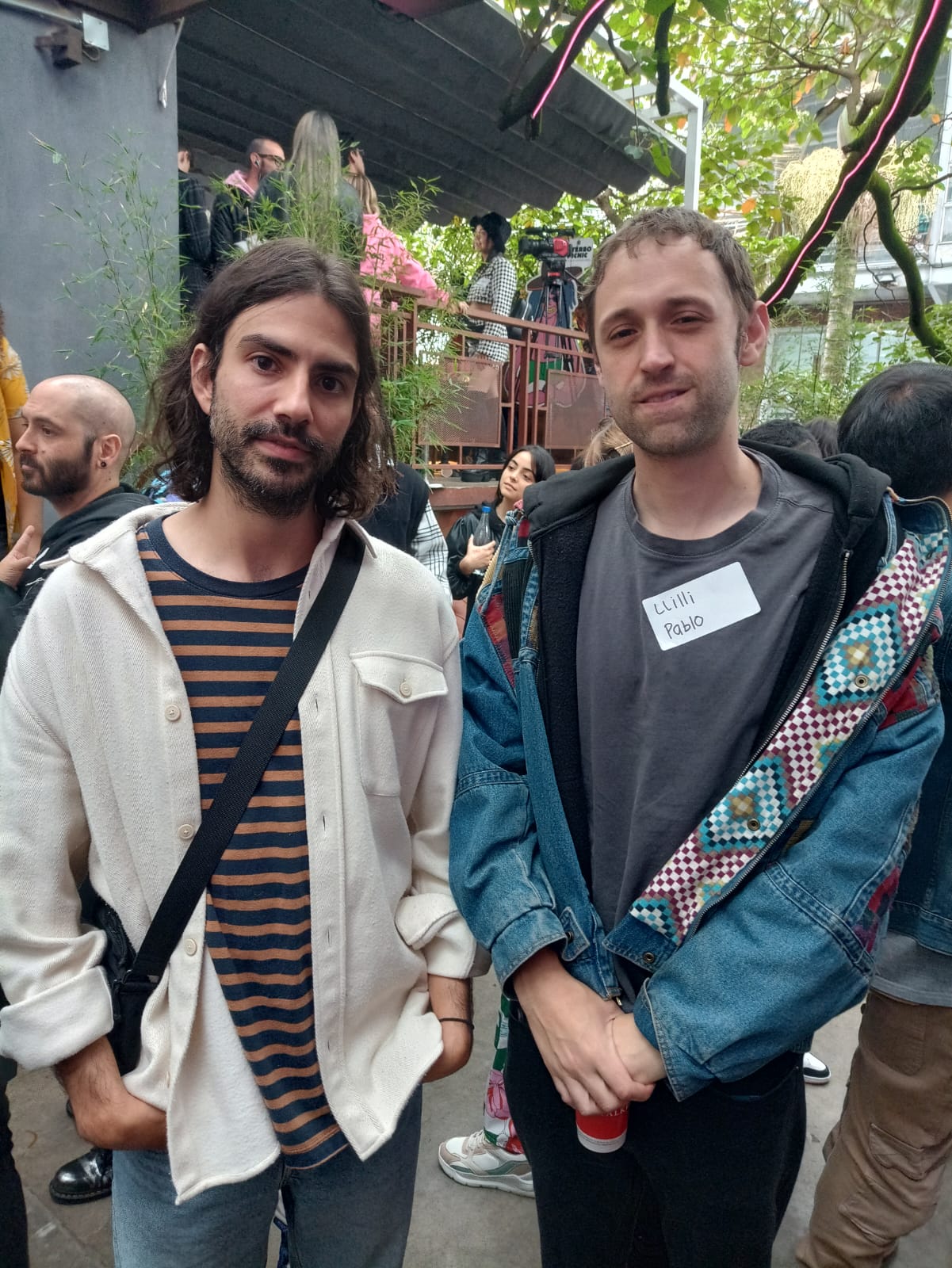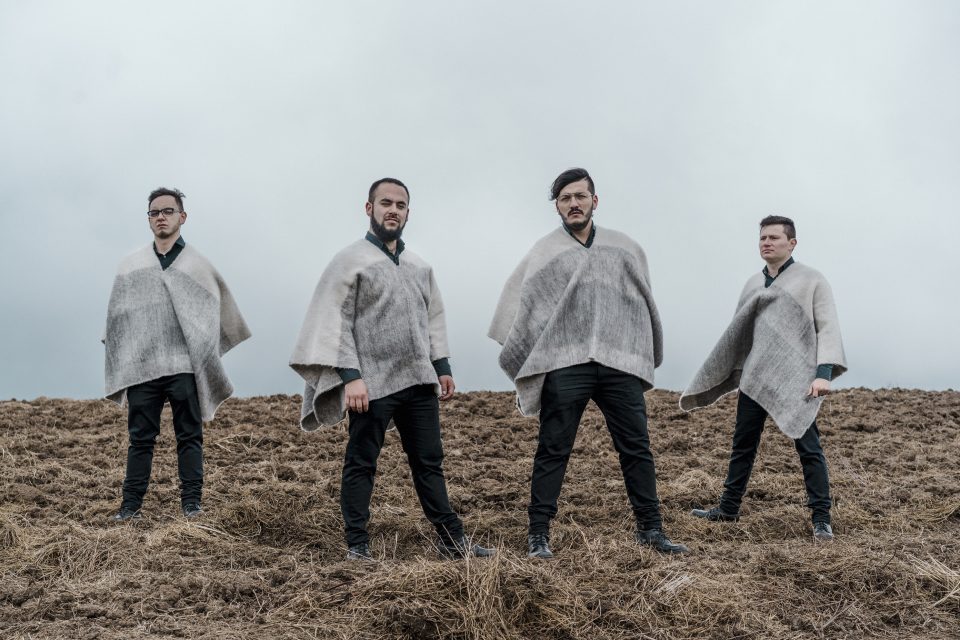
The new Rolling Ruanas album, La Balada del Carranguero, is out now.
The Rolling Ruanas manage to seamlessly mix carranga with rock. Ángela Forero-Aponte meets the poncho-clad foursome who take on classics like ‘A Hard Day’s Night’ or ‘Paint it Black’ on traditional Colombian instruments.
‘Sound connects us’ reads the sign in neon lights on the wall of one of the waiting rooms in Raag Sound, the production studio behind the Rolling Ruanas. At first, this is just a sentence, a motto, but as I come to understand this fantastic Colombian band better, this sentence acquires a deeper meaning.
As the interview begins, the four enthusiastic young men – Juan Diego Moreno (voice and guacharaca), Fernando Cely (requinto), Luis Guillermo González (guitar), and Jorge Mario Velasco (tiple) in red ruanas – ponchos – all greet me kindly. This is not a traditional rock band, instead of electric guitars, the requinto, guacharaca and tiple are used to play carranga – an Andean style of Colombian folk music. It’s a bit like playing ‘Stairway to Heaven’ on a ukulele, while managing to stay true to both rock and ukulele music styles.
The group are relaxed, laid back and friendly as they tell me about their lives, their new album La Balada del Carranguero, and their upcoming concert.
I had heard that many of the songs on the new album are connected to a legendary character from Sogamoso in Boyacá, called the ‘ciudad del sol y del acero’ because of its indigenous worship of the sun god and the city’s steel production. When I ask about the character of the sun and steel campesino, Luis Guillermo excitedly explains more.
“I think the story of this character is going to have everybody talking about it,” he says. “This is a character we have taken the time to study in depth. We studied his movements, how he expresses himself, what his words sound like, his relationship with nature, with the scenery, with the sounds and how he experiences life through all of these, and from those experiences comes La Balada del Carranguero.”
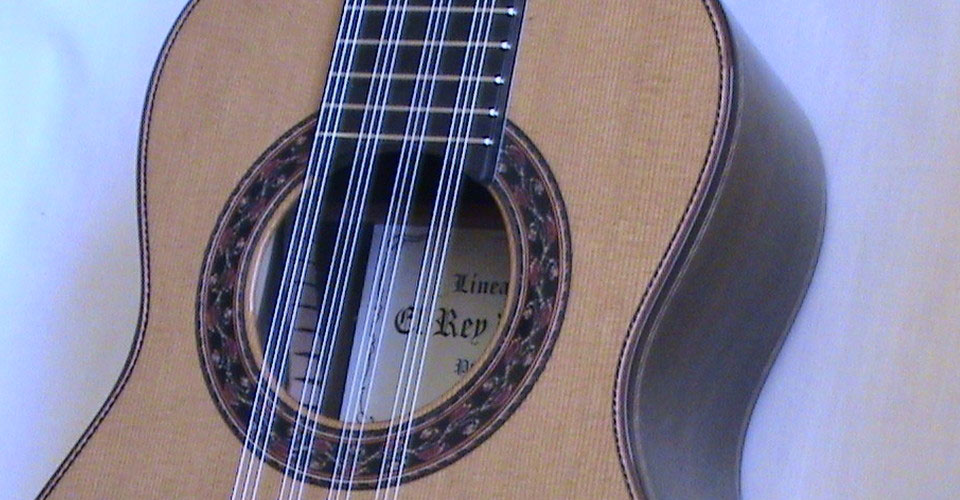
The 12 string arrangement on the Colombian tiple.
Ever the showman, he knows when to keep the audience waiting for more: “This is all we can tell you about our new production. We cannot reveal many more details for now, but you’ll get the full picture at our concert on March 16, and on the 17th when it’ll be digitally available.”
It’s not surprising that the group have many musical influences. Juan Diego (who is definitely the rocker of the four), tells me his favourite band is the Foo Fighters, and that he loves the whole wave of 90s music, especially Nirvana who really revolutionised his love for rock – and the reason why he’s always trying to blend 90s trends into the band’s singles.
Fernando and Luis Guillermo were actually a metal duo way back when the band’s metal heads followed groups like Angra. Fernando tells me he’s not from a musical family, but that his father was a melody-maniac who enrolled him in music lessons with the symphonic orchestra. When the group stayed at Fernando’s, his dad would wake them all up with the stereo at full volume. Fernando started playing bambucos and waltzes, then at school started listening to rock. He reflects that this might be the same with their followers: “They say ‘I like rock’, but they also like tradition; that’s why they listen to the Rolling Ruanas.”
Luis Guillermo, whose family are from Santander and Bolívar, says that both his grandfathers played the tiple, torbellinos and guabinas during town fiestas. Then – jokingly – tells me he ended up in music because one of his uncles came to him and asked: “Why don’t you come learn play the guitar instead of climbing up that orange tree?” “Or a guava tree?” jokes Fernando.
Jorge comes from a more traditional Colombian folk background. His grandfather, a saxophonist and clarinetist for none other than the Lucho Bermúdez Orchestra, was a great influence who introduced him to all kinds of tropical music, pasillos and bambucos. Jorge tells us he was already familiar with those rhythms thanks to Faiver Olave, a musical institution in Pitalito, Huila.
Sound really has connected these four individuals, and they in turn have connected sounds and genres to make their own quirky and distinct musical style that pulls worlds together.
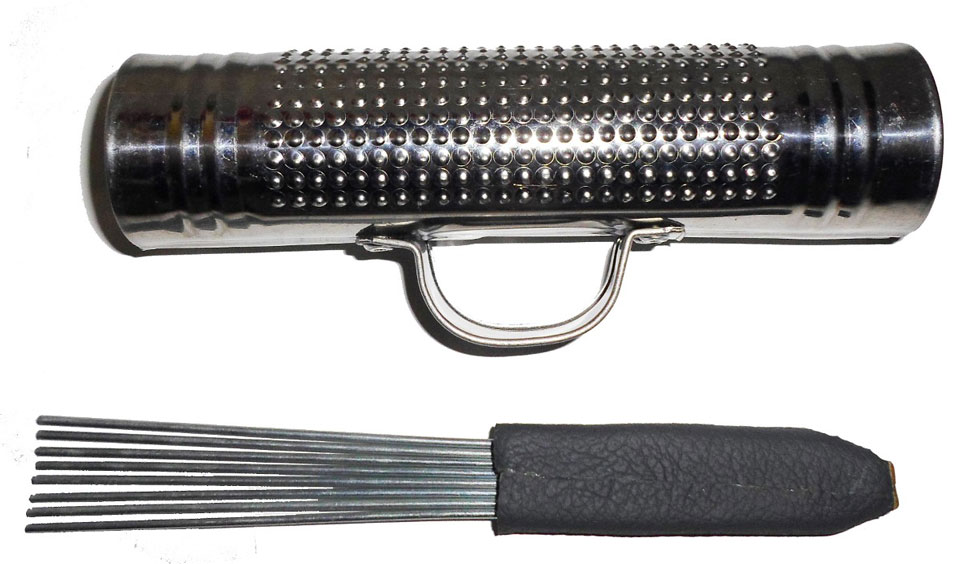
What Colombian ensemble would be complete without the guacharaca!
The Bogotá Post: When did you four get together?
Juan Diego: We started the band about three years ago, but we had been involved in other projects together, two of us, then three of us. Then we all got together to form the Rolling Ruanas, which is a project born out of our love for traditional Colombian and Latin American folk music, and basically a love for artistic expression.
BP: How did you manage to blend such distinct genres?
Luis Guillermo: Well, this comes from our family traditions of music from the high and flat lands of Cundinamarca and Boyacá. We grew up listening to many genres of rock, too, and we started exploring the rock types which would be more adaptable to carranga. This experimentation resulted in the kind of music we play today.
BP: What should we expect from this new album?
Jorge Velasco: Our new baby, our new album, shows how we have matured. We now understand how these two types of music are interwoven. This new album shows this growth in time, talent, and how much we love this art.
BP: What about your upcoming concert in March?
LG: The concert will be at Julio Mario Santo Domingo Theatre. People are thrilled that we are giving this concert, and tickets are almost sold out. It will show our journey over the last three years, with an amazing staging. We are actually doing lots of exercise!
BP: What does it feel to be on stage?
JD: Well, it feels…something nice about it is it feels more and more familiar every time. Of course, we weren’t used to playing in front of thousands of people; it’s overwhelming, but the stage, little by little, has started to feel our own. It has also become a sacred place, a place where you leave a little bit more of your essence every time.
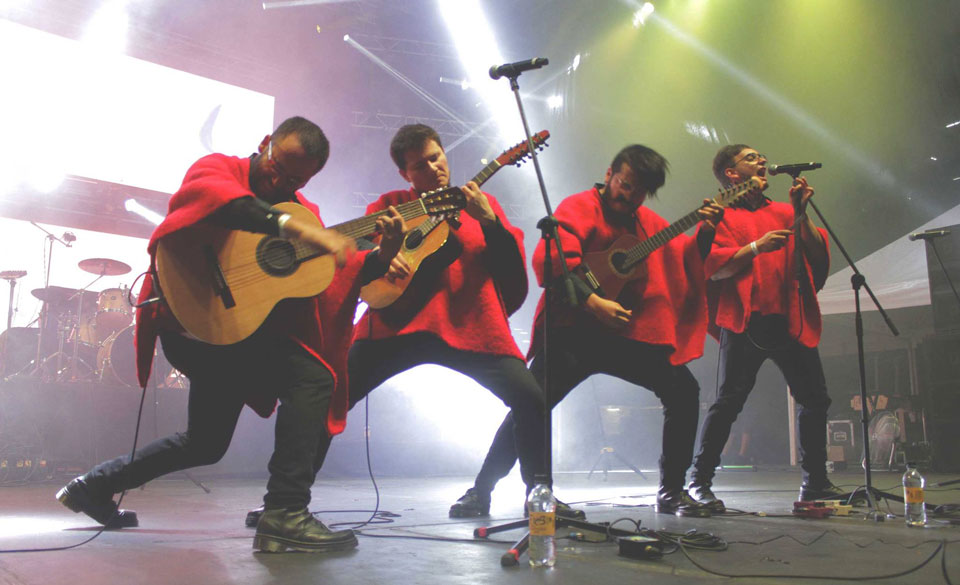
The Rolling Ruanas rocking out on stage.
BP: You’ve played in other regions of Colombia. How have people welcomed you there?
Fernando Cely: We are actually pleasantly surprised. We’ve been to Medellín three times; the first gig was at the National Festival of Tiples. Then, we went back, and there were a lot of people – families and their kids – paisas dancing and waving their ponchos to the sound of carranga-rock music. Then, we went to Tuluá, people actually moshed there…that’s right! They moshed to our music, we were amazed!
BP: Are you planning to tour internationally?
FC: We are currently focused on taking one step at a time. We want to focus all our energy on this new production, but we have been talking with our agent at Raag Sound, who have really supported us throughout this process, and we would like to go to Mexico, a very big window for independent music, and then, everywhere else.
BP: You went viral through two videos in which you played covers of The Beatles and The Rolling Stones. Where do you think all that success and fame comes from?
JD: You know, what we have learned is that fame is something extra. We simply started by having tinto at home, rehearsing for three hours, and philosophising about life in between, and little by little, these get-togethers to have tinto transformed into what is now our life and this project.



